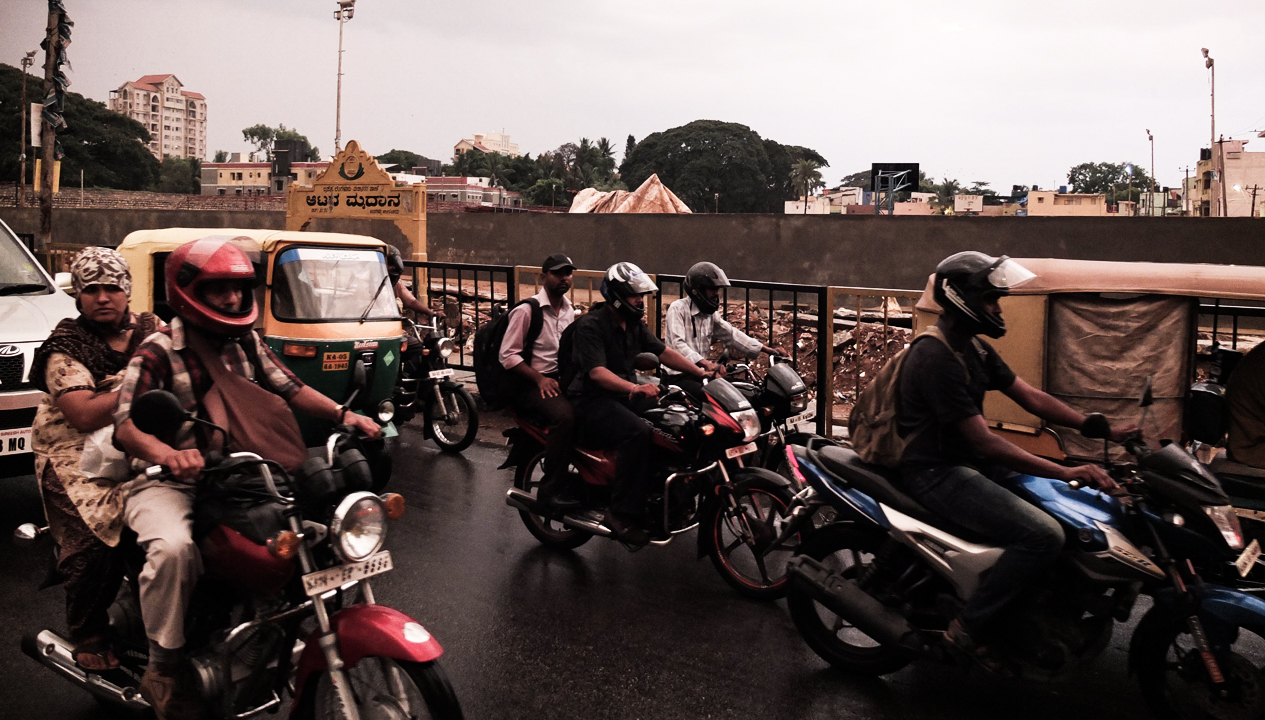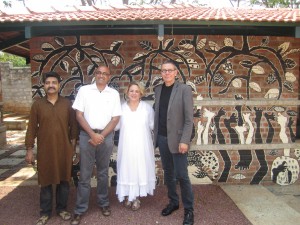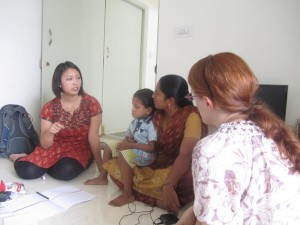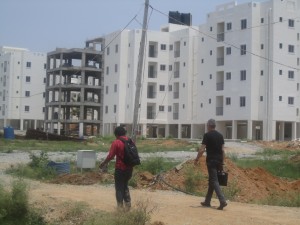“Experiencing like breathing is rhythm of intakings and outgivings. The succesion is punctuated and made a rhythm by the experience of intervals, periods in which one phase is ceasing and the other is inchoate and preparing.”
– John Dewey in Art as Experience
As I flash back to my all too brief time in India, Dewey’s words resonate deeply. He captures the ebbs and flows as well as the multi-dimensional inputs and state of emergence that experiences rich in purpose and intensity afford us. In our work through Designmatters, purposeful immersion in the field with partners is one such time that presents itself with the full power of experience for us as a community of learners and educators. I was privileged to join our team of product and environmental design students and their faculty (David Mocarski and Cory Grosser) during field research in Bangalore as part of our current collaboration with Ashoka’s Housing for All (HFA) initiative.
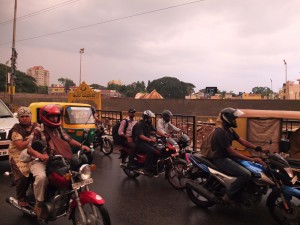 Bangalore is the third most populous city and the second fastest growing metropolis in India. What was once dubbed the garden city and India’s “pensioner’s paradise” of the 1950’s and 1960’s, has become a powerful IT innovation hub, a booming city with exploding demographics and inspiring diversity that presents both unique opportunities and challenges from many an urban planning and development perspective. This includes of course the housing sector, which is an area of tremendous possibilities given how fast incomes are rising for those in the middle and the top of the Base of the Pyramid (BoP).
Bangalore is the third most populous city and the second fastest growing metropolis in India. What was once dubbed the garden city and India’s “pensioner’s paradise” of the 1950’s and 1960’s, has become a powerful IT innovation hub, a booming city with exploding demographics and inspiring diversity that presents both unique opportunities and challenges from many an urban planning and development perspective. This includes of course the housing sector, which is an area of tremendous possibilities given how fast incomes are rising for those in the middle and the top of the Base of the Pyramid (BoP).
As the lead in our collaboration, Vishnu Swaminathan, Ashoka’s Director of Housing for All explains, this is a target client base of consumers who are not being served by the current supply of market-based affordable housing solutions. Ashoka, which is the largest global network of social entrepreneurs, is looking to address some of the gaps in this housing market and pioneering the concept of “Hybrid Value Chains” – a partnership between for-profits and not-for-profits for social change. In India, the focus is on the construction of new homes through partnerships with social entrepreneurs, developers, and citizen sector organizations (CSOs) but also in building a social innovation ecosystem that includes the integration of design principles to arrive at the experience of better living spaces overall. This is where the Designmatters educational partnership comes in as our Environmental Design studio, “Living Home India,” will be a test-bed we hope, for design explorations about sustainable and cost-effective furnishings that can be aspirational and appropriate in this context.
Thanks to the hospitality of the India Ashoka team and their coordination on the ground with visits to manufacturing plants, discussions with local designers, developers, architects and experts and partners in the HFA program—as well as key time with some of the families who are moving into this new housing and opened their doors to us–our team was exposed to a full spectrum of experiences. An unexpected, and magical one for many of us was a visit to The Valley School founded by the Indian philosopher Jiddu Krishnamurti , set in 100 plus acres of forest amidst the rolling hills of Thatguni, about 17 km to the south of Bangalore.
Our full morning included time with their staff in their art center where we were invited to experience their clay workshop space, share a home-made meal, hike through their gardens with teasing monkeys, and take a restorative moment to just be in quiet contemplation in their retreat center. There, the beeping motorized rickshaws and the kaleidoscopic chaos of Bangalore suddenly seemed very far removed. And as I later read up a bit more about Krishnamurti’s philosophy and reviewed the school’s vision statement, I was struck by his articulation of a school as “a place where one learns both the importance of knowledge and its limitation…. a place where one learns to observe the world without a particular point of view or conclusion.”
Dewey’s invocation to experience the world in all of its fullness and sense-making messiness resonated then for me once more.
Follow the Living Home India studio blog here.
